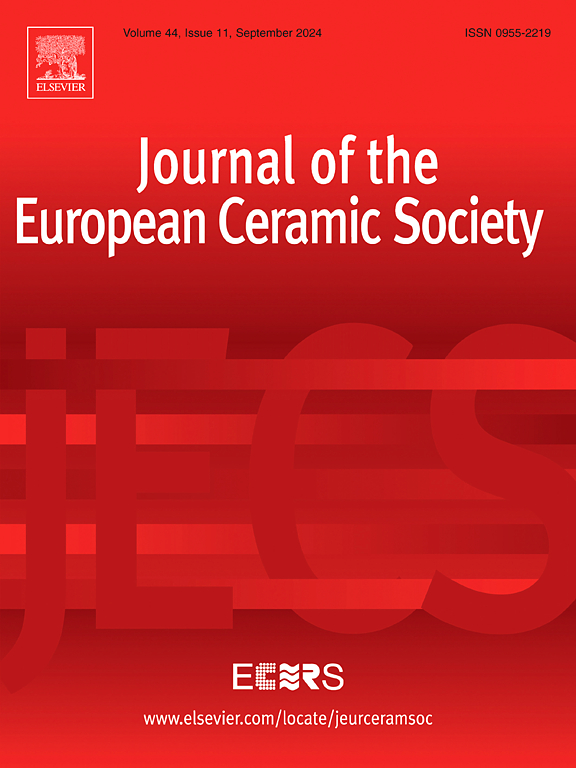An in-depth exploration of microstructural characteristics and phase evolution in RE-silicates (RE= Er0.25Tm0.25Yb0.25Lu0.25) multiphase environmental barrier coatings utilizing digital image processing techniques
IF 5.8
2区 材料科学
Q1 MATERIALS SCIENCE, CERAMICS
Journal of The European Ceramic Society
Pub Date : 2025-02-10
DOI:10.1016/j.jeurceramsoc.2025.117276
引用次数: 0
Abstract
Multiphase high-entropy rare-earth silicate environmental barrier coatings (EBCs) were processed using atmospheric plasma spraying (APS) method with six specifically designed feedstocks, each comprising varying proportions of (Er0.25Tm0.25Yb0.25Lu0.25)2Si2O7 and (Er0.25Tm0.25Yb0.25Lu0.25)2SiO5. The microstructural characteristics and phase evolution of the as-deposited coatings, as well as those subjected to annealing at 1300 °C, were investigated. For quantitative comparison, a comprehensive analysis was conducted on phase distribution and proportions, crack area percentages, mean crack widths, porosity and pore sizes were systematically analyzed using digital image processing techniques. Results indicate that a higher disilicate proportion in the topcoats (M25D75, M10D90 and D100) reduces cracking and ensures balanced microstructural morphologies of coatings, suggesting enhanced performance in EBC applications. Additionally, this study demonstrates that the compositional and microstructural characteristics of rare earth silicates in EBCs can be effectively controlled through judicious adjustment of feedstock composition.
求助全文
约1分钟内获得全文
求助全文
来源期刊

Journal of The European Ceramic Society
工程技术-材料科学:硅酸盐
CiteScore
10.70
自引率
12.30%
发文量
863
审稿时长
35 days
期刊介绍:
The Journal of the European Ceramic Society publishes the results of original research and reviews relating to ceramic materials. Papers of either an experimental or theoretical character will be welcomed on a fully international basis. The emphasis is on novel generic science concerning the relationships between processing, microstructure and properties of polycrystalline ceramics consolidated at high temperature. Papers may relate to any of the conventional categories of ceramic: structural, functional, traditional or composite. The central objective is to sustain a high standard of research quality by means of appropriate reviewing procedures.
 求助内容:
求助内容: 应助结果提醒方式:
应助结果提醒方式:


